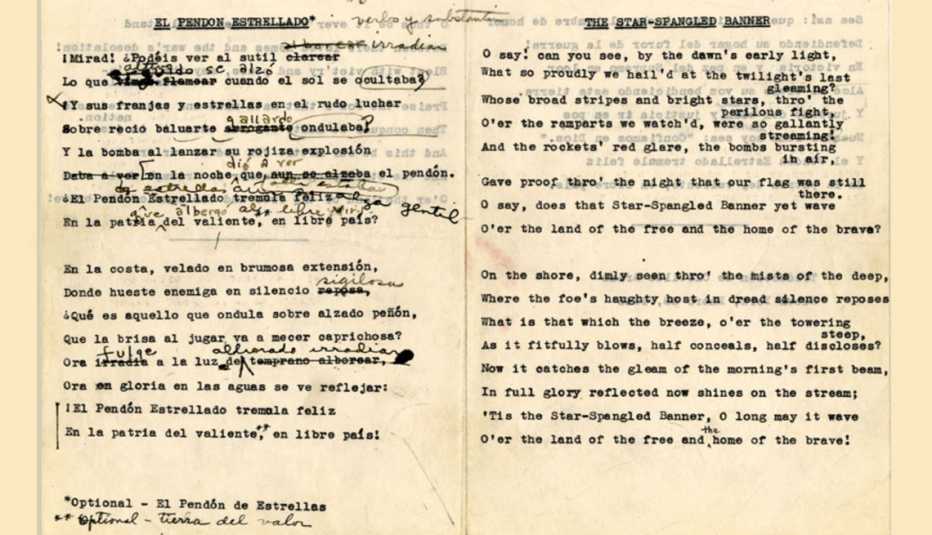AARP Hearing Center
In July 1934, Franklin D. Roosevelt boarded the Navy cruiser USS Houston for a presidential visit to Latin America, including stops in Puerto Rico and Colombia. “In the field of world policy,” Roosevelt had declared in his inaugural address the previous year, “I would dedicate this nation to the policy of the good neighbor—the neighbor who resolutely respects himself and because he does so, respects the rights of others.”
At the core of this good neighbor policy was an effort to present a positive image of the U.S. throughout the Americas through cultural exchange. To that end, the U.S. Department of State in 1945 requested submissions for translations of the “Star-Spangled Banner” into Spanish and Portuguese. The idea was to distribute these new versions to U.S. consulates so the anthem could be performed throughout Latin America in the countries’ native language.
Titled “El Pendón Estrellado,” the Spanish version of the anthem was written by Clotilde Arias, a Peruvian composer who worked in New York City writing radio jingles. One of her biggest hits was a Spanish translation of “Rum and Coca-Cola,” a lovely calypso song and a huge hit for the Andrews Sisters.
“Clotilde was in advertising at a time when women were mainly secretaries,” says Melinda Machado, director of communications and advertising at the Smithsonian National Museum of American History (NMAH). “She was publishing sheet music and creating jingles for some pretty big clients: Ford, Campbell's Soup, IBM. Consequently, she was well positioned to be hired by the State Department. Her mission was to translate it in a way that it could be sung to the original tune.”


Almost lost to history
The translated version of the anthem, however, was little known at home and languished in obscurity until 2012, when the late Marvette Pérez, then a curator at the NMAH, received a letter from Arias’ family offering to share documentation about her career. Pérez loved the idea and organized an exhibition that featured a brand-new recording of Arias’ translation performed by the chamber choir Coral Cantigas, under the musical direction of Diana Sáez.
“Arias was a superb composer and a talented lyricist,” says Sáez, now director of choral activities at Towson University, who says she gained a deeper appreciation for Arias’ work in the process of recording the little-known Spanish lyrics.
With her perfect pitch and background as a sought-after accompanist, Arias was a trained composer who had moved to the U.S. at age 22 to pursue advanced musical studies. Translating the national anthem, however, was no easy task.


“I was totally surprised when I learned the story behind these lyrics,” says Sáez, who was born in Puerto Rico. “It was amazing to see how Clotilde had captured the meaning of such an elaborate and complicated text. Because Spanish is my first language, her translation actually helped me understand the English original better. Translating something like that is a phenomenal challenge, and she made it happen.”




































































